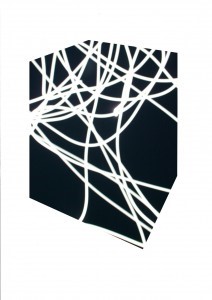Arte Laguna (2007)

Photography as a goal
Looking at the Italian photographic reality and comparing it with the international one, we can still see many points of diversity. Despite the global scenario of the art system, in our country there are still many aspects lacking in the way of conceiving this expression.
The model of use and disclosure is still deeply linked to a development that sees photography as a minor art or however intended for a specific and functional use. It is difficult to make the general public perceive the value of the photographic genre in its sense of autonomous visual art and unrelated to any other phenomenon
Francesco Bonami, in the exhibition catalogue La dolce crisi of 2006, focused on this phenomenon, stating that Italian photography has developed and has fallen victim to three trends: the paparazzo, the fashion photographer and architecture photography. It is very widespread the propensity to attribute to the work of the photographer a functional value only and not the end of the work of the photographer. In recent years the discipline is finally loosing from this robe that was sewn on him. This happens, however, with considerable difficulties, also because of a structure ranging from exhibitions to magazines, up to the commercial field. It should also be noted that we live in the age of images and every single moment of our existence pervaded by icons created by advertising. As a result, the role of the photographer is extended to multiple functions especially within the world of economics for the promotion of products. Today’s scholars must continue to work to ensure that photography is able to obtain its own space and a consideration of art independent of any use. The contemporary art system certainly encouraged this process. It may seem paradoxical but just a non-exclusive use of the photo as a way of expression has strengthened its credibility within the cauldron of visual arts.
Analyzing the new authors of the beautiful country it is easy to see how many young people combine the use of the photo with video and installation, creating relationships of intermediality. They are put in place a series of relational exchanges that led to the creation of a new figure as a photographer, which if to evaluate his act as an intimate and emotional creative act. As Roberto Valtorta points out: in recent years, the characteristic of photography has seemed more and more to be a young art, born late within the thousand-year-old and complex history of Western art, which has had in fate the duty to find an identity, mature and then grow old celery ( Is photography contemporary?, Lupetti publisher 2004).
It is good to remember that the path of the photographic medium is not even two centuries old. As a result, a whole series of constraints to which painting has turned with much easier periods of time. One of the last barriers, which is slowly crumbling, is the exaltation of technicality. Specifying that the technique is one of the fundamental assumptions for any kind of expression, it should not be confused with mere virtuosity for its own sake. The photograph is subjected to a fury towards the middle. Today we often hear debates focused on the "superiority" of black and white towards color, or digital towards analog. Obviously, there are appreciable differences, but absolute values should not be created. The risk is to make sterile speeches and passers-by. They are disputes about technical/ formal elements that hinder real artistic research. The attention should be paid to the poetics, to the instances that move it and on how the expression knows how to focus the moods of a certain historical and social moment.
Obviously the technical side is vital. Who among us is not moved by the perfection of vision of a work by Hiroshi Sugimoto or Gabriele Basilico? But their greatness lies not only in formal excellence. The masters of photography know how to create a substrate of emotions and reflections that involve the user in a direct way. As with pictorial works, the time of mere representation is over. Photography is not built by a simple naturalistic representation of reality, but the subjective component must be preponderant.
To take a further step forward it could be said that even the scope of the photographer today has changed. It is symptomatic to think that one of the participants of the first international prize in Lagoon art photography asked not to print his photograph but to project it to the wall. Through the world of visual arts, relationships are created that are foreign to the photographer’s normal modus operandi. Then the same definition of photographer comes to wobble.
I believe that today’s author must work freely, through a continuous dialogue with other expressive languages. Only knowing how to combine the mastery of the medium with a lucid subjective and poetic vision, avoids that the research becomes bogged down in sterile representation. Photography, like all forms of art, must free itself from any rigid schematization, in order not to be a simple duplication, but a peculiar point of view on reality.
Carlo Sala
Art critic